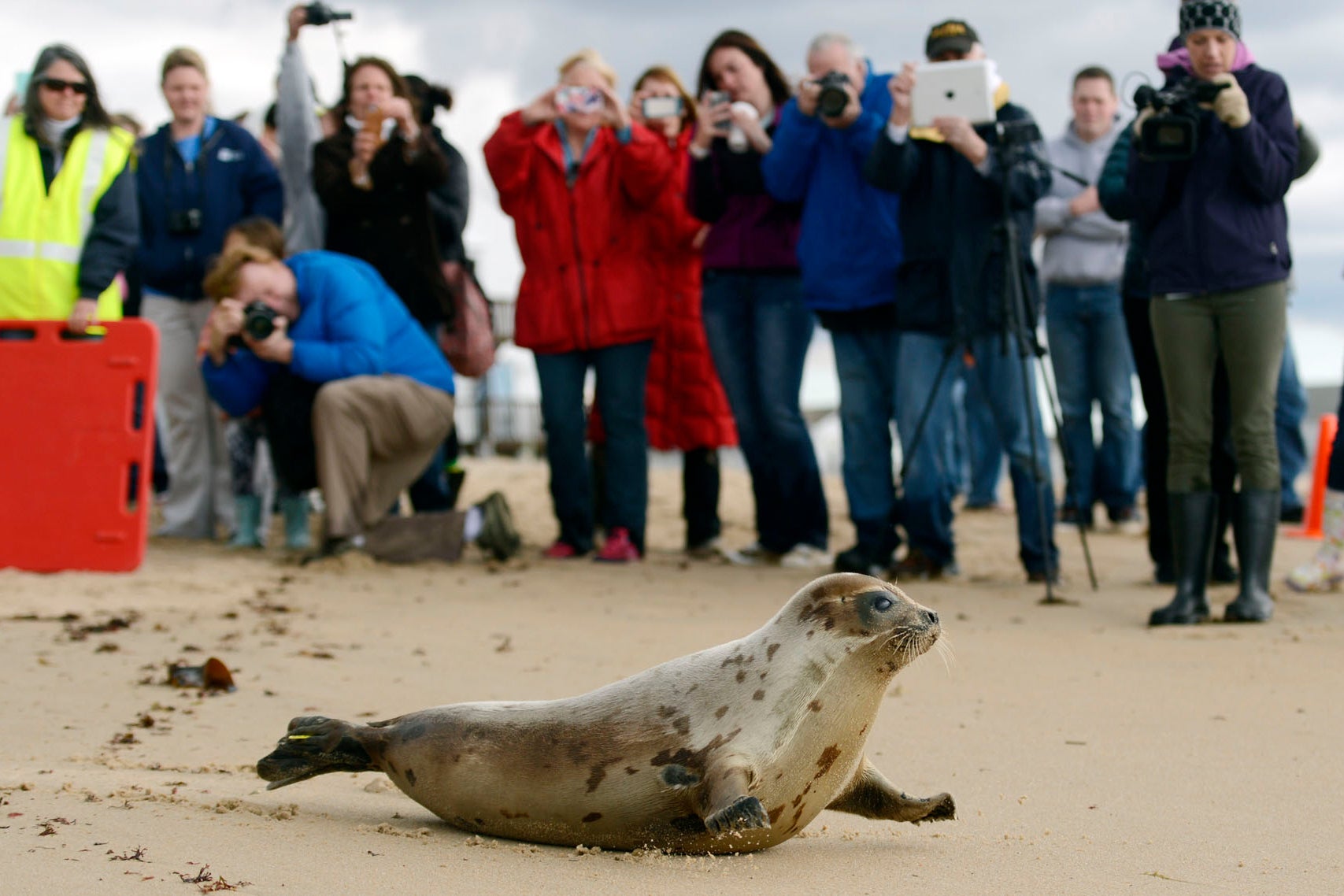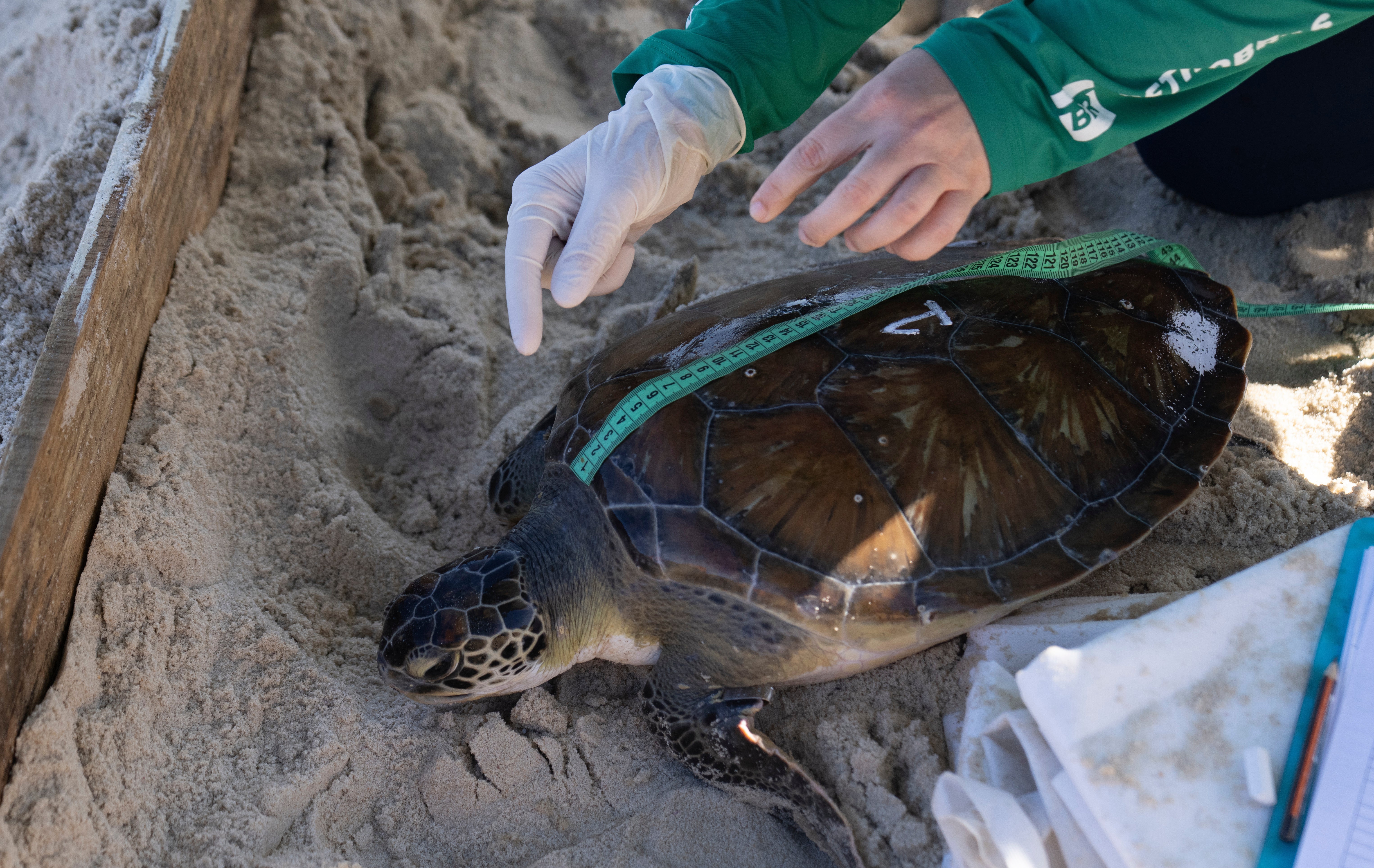Arctic seals are being pushed closer to extinction by the climate crisis, while more than half of the world's bird species are in decline due to deforestation and agricultural expansion, a new assessment from the International Union for Conservation of Nature (IUCN) has warned.
However, the IUCN's latest Red List of Threatened Species, released on Friday, also offers a glimmer of hope.
Green sea turtles have made a substantial recovery, a testament to decades of dedicated conservation efforts.
Rima Jabado, deputy chair of the IUCN Species Survival Commission, emphasised that while many animals face increasing risks of disappearing, the updated list demonstrates how species can be brought back from the brink, namely the Green Turtle.
She said: "Hope and concern go hand in hand in this work. The same persistence that brought back the green sea turtle can be mirrored in small, everyday actions — supporting sustainable choices, backing conservation initiatives, and urging leaders to follow through on their environmental promises."
The annual list, compiled by teams of scientists assessing global data, is an "enormous and important" scientific undertaking, according to Andrew Farnsworth, a visiting scientist at the Cornell Lab of Ornithology.
“Every time one is done and every time there’s revision, there’s more information, and there’s more ability to answer questions” on species, some of which are still largely a mystery to researchers, Farnsworth said.
Sea ice loss

Because all the marine mammals native to the Arctic — seals, whales and polar bears — rely on the habitat provided by sea ice, they're all at risk as it diminishes because of human-caused climate change, said Kit Kovacs, co-chair of IUCN’s Species Survival Commission Pinniped Specialist Group, which focuses on seals.
The three species highlighted in the latest IUCN report — harp, hooded and bearded seals — have been moved up to a designation of greater concern in the latest update, indicating they are increasingly threatened by extinction, Kovacs said.
The same melting of glaciers and sea ice destroying seal habitats also “generally will bring escalation in extreme weather events, which are already impacting people around the globe,” wrote Kovacs.
“Acting to help seals is acting to help humanity when it comes to climate change,” Kovacs said.
Global bird decline
The update also highlighted Madagascar, West Africa and Central America, where Schlegel’s asity, the black-casqued hornbill and the tail-bobbing northern nightingale-wren were all moved to near-threatened status. Those are three specific birds in trouble, but numbers are dropping for around three-fifths of birds globally.
Deforestation of tropical forests is one of a “depressing litany of threats” to birds, a list that includes agricultural expansion and intensification, competition from invasive species and climate change, said Stuart Butchart, chief scientist at BirdLife International.
“The fact that 61 per cent of the world’s birds are declining is an alarm bell that we can’t afford to ignore,” Butchart said.
The annual UN climate summit will be held in November in Belem, Brazil, with much attention on the Amazon and the value of tropical forests to humans and animals. But Farnsworth, of Cornell, said he was “not so confident” that world’s leaders would take decisive action to protect imperiled bird species.
“I would like to think things like birds are nonpartisan, and you can find common ground,” he said. "But it's not easy.”
Green sea turtles

One success story is the rebound of green sea turtles in many parts of the world's oceans. Experts see that as a bright spot because it shows how effective human interventions, like legal protections and conservation programs, can be.
Still, "it’s important to note that conservation efforts of sea turtles can take decades before you realise the fruits of that labor,” said Justin Perrault, vice president of research at Loggerhead Marinelife Center in Juno Beach, Florida, who wasn't involved with the IUCN report.
The overall success with green sea turtles should be celebrated and used as an example with other species, some of which, like hawksbills and leatherbacks, aren't doing nearly as well, said Nicolas Pilcher, executive director of the Marine Research Foundation.
And even for green sea turtles, areas still remain where climate change and other factors like erosion are damaging habitats, Pilcher said, and some of those are poorer communities that receive less conservation funding.
But in the places where they have recovered, it's "a great story of, actually, we can do something about this,” Pilcher said. “We can. We can make a difference.”







